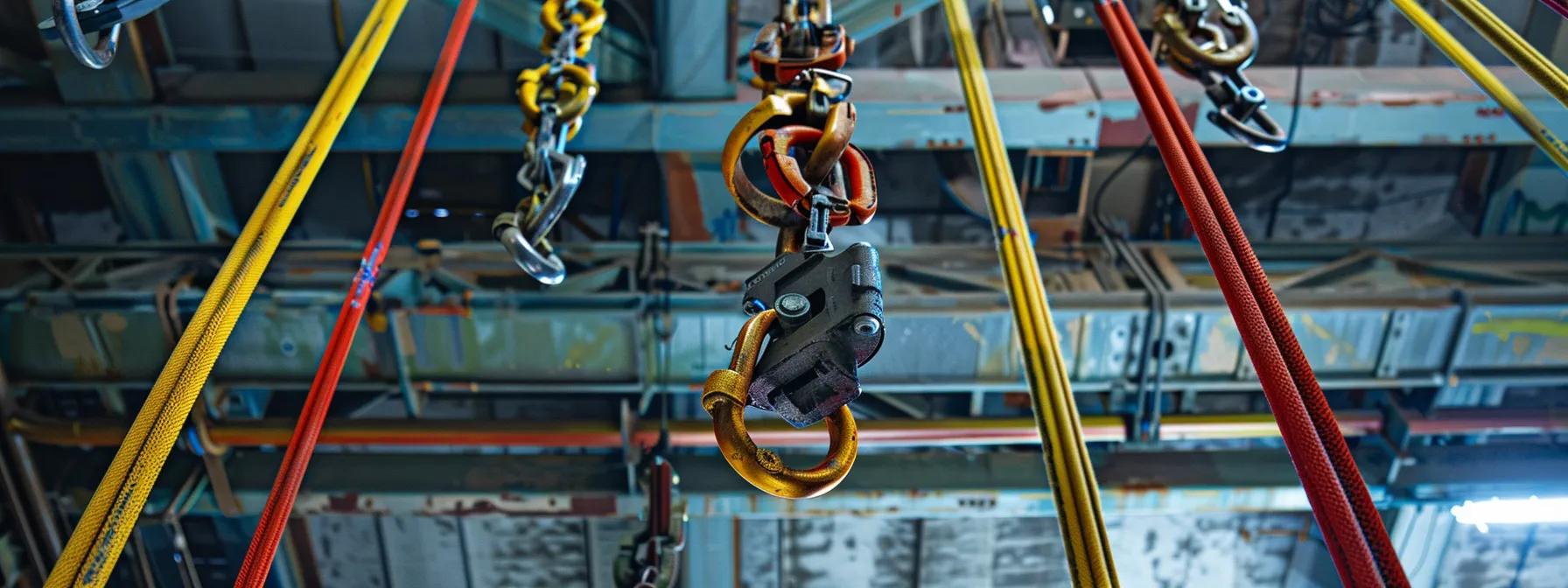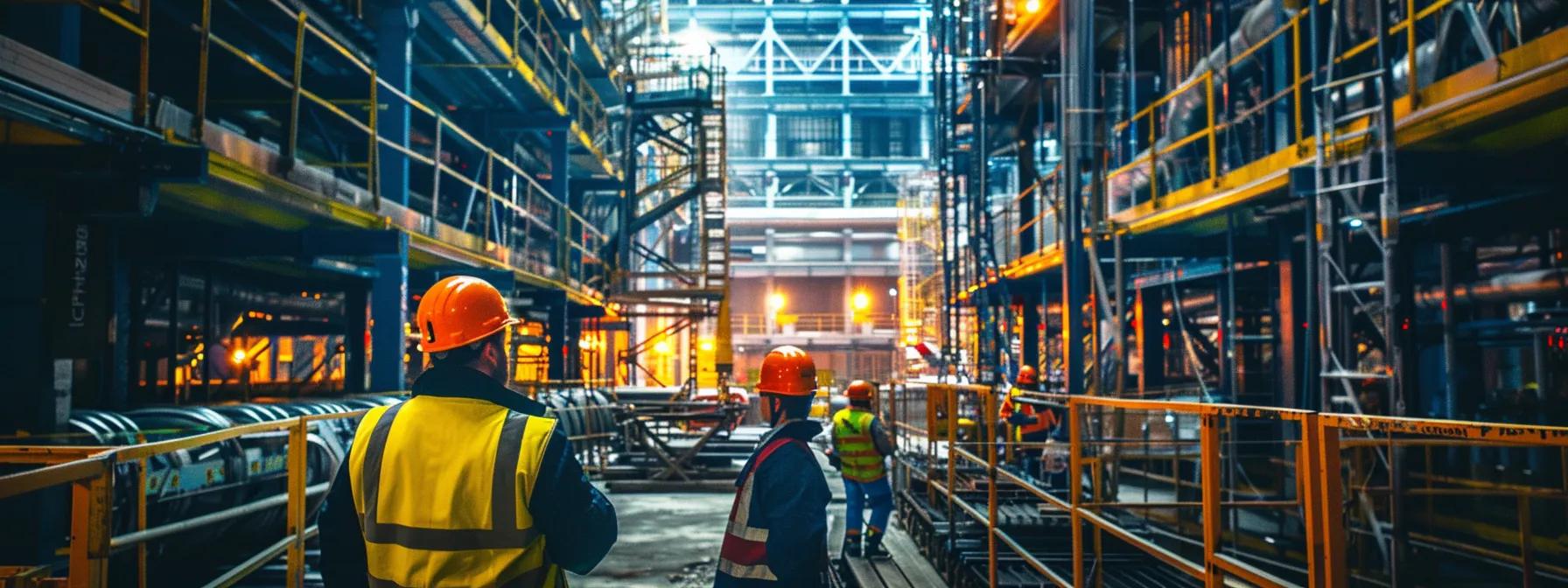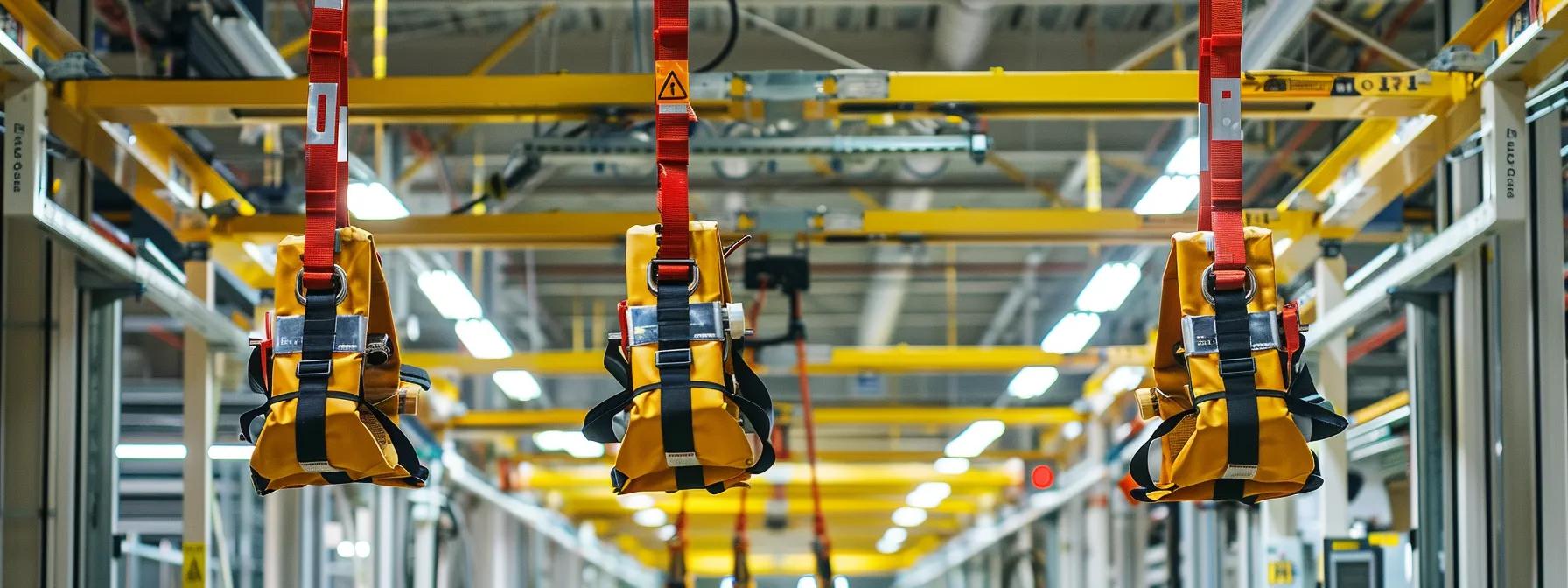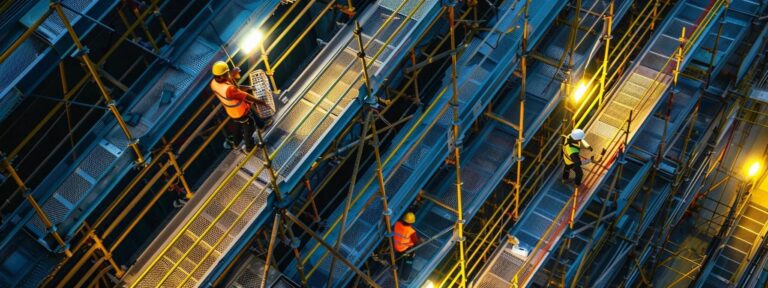Overhead Fall Protection Systems and Anchors: A Safety Game-Changer
Overhead fall protection systems are critical for workplace safety by minimizing fall-related injuries in high-risk environments. By combining components such as anchors, ladder-systems, and safety harness systems used by us fall protection, these systems create a reliable barrier against falls. Modern construction, industrial, and maintenance operations (industries we serve) have significantly reduced fall injuries through effective overhead protection and annual maintenance.
Understanding Overhead Fall Protection Systems and Their Critical Role
Overhead fall protection refers to specialized safety measures that prevent falls from elevated surfaces through integrated anchoring systems such as guardrail systems. In high-risk environments, these systems—including lifeline systems—immobilize a falling worker before impact. They are built with robust materials and designed to rigorous industry standards, following design-installation best practices. Early intervention, coupled with regular annual maintenance, reduces the force of a fall, lowering the risk of head, spinal, and limb injuries.
Defining Overhead Fall Protection and Its Necessity in High-Risk Environments
Overhead fall protection is essential on construction sites, industrial plants, and warehouses (industries we serve) where unprotected edges, suspended platforms, and elevated work areas pose hazards. These systems serve as a first-line defense when traditional guardrail systems or personal fall arrest equipment are inadequate. By using physically anchored elements that are often implemented through design-installation techniques, and by incorporating lifeline systems, they intercept potential falls, acting both passively and proactively to improve safety. Regular annual maintenance of these systems further ensures their reliability.
How Overhead Systems Prevent Falls and Minimize Injury
An overhead system uses a network of anchors and support beams positioned above key work areas. Through proper design-installation and annual maintenance, these overhead structures maintain their efficiency and safety. When a worker wearing a safety harness loses balance, the fall forces transfer to these anchors in line with us fall protection principles, and integrated lifeline systems help manage the energy load. This controlled transfer of energy prevents a free fall and decelerates the impact. Studies indicate that such systems can reduce impact forces by up to 50%, lowering the severity of injuries for industries we serve.
Key Components of an Effective Overhead Fall Protection Setup
An effective overhead fall protection system includes:
• Anchors: Fixed or temporary structures that withstand dynamic loads during a fall, integral to a proper design-installation process.
• Safety Harness Systems: Equipment designed to evenly distribute fall forces over the body and support routine annual maintenance checks.
• Lifelines and Lanyards: Connective elements, often with shock absorbers to reduce arrest forces, and a key component of lifeline systems.
• Inspection Equipment: Tools and procedures that verify the safe operating condition of all components. In areas requiring extra support, consider incorporating ladder-systems and guardrail systems.
Together, these elements form a safety net that meets regulatory requirements and protects workers by withstanding forces far beyond routine stress.
Differentiating Overhead Systems From Other Fall Protection Methods
Overhead systems differ from guardrails, safety nets, and personal fall arrest systems (PFAS) used by us fall protection specialists. While PFAS react after a fall begins, overhead systems—enhanced by a robust design-installation process—are designed to intercept falls preemptively. This proactive strategy is appreciated by many industries we serve and, when paired with scheduled annual maintenance, proves beneficial in congested or varied work environments where even guardrail systems sometimes fall short.
Industries Benefiting Most From Overhead Fall Protection Implementation
Important industries include: • Construction: Roof work, steel erection, and maintenance benefit from secure overhead anchoring and guardrail systems.
• Manufacturing: Plants and warehouses with elevated equipment rely on these systems with integrated design-installation approaches.
• Energy: Power plants and wind turbine maintenance involve complex heights, requiring annual maintenance.
• Telecommunications: Tower and pole climbing require advanced protection measures and lifeline systems.
• Transportation: Aircraft hangars and train maintenance operations use specialized systems, and for inquiries, get a free quote.
Adopting overhead protection in these sectors has led to a marked decline in accidents and enhanced operational efficiency.
Exploring Different Types of Fall Protection Anchors
Fall protection anchors are the keystone of any overhead safety system. They provide the secure fixation necessary to manage fall energy without compromising the integrity of the structure.

The Function of Fall Protection Anchors in Overall Safety
Anchors offer a secure connection between personal protective equipment (PPE) and the structure, a key element in us fall protection. Engineered with rigorous design-installation standards to withstand at least 5,000 pounds of force—with some rated for higher loads—they ensure that fall energy is smoothly managed, reducing the risk of injury. For more detailed information on our offerings, get a free quote.
Permanent Versus Temporary Fall Protection Anchor Solutions
Anchors fall into two main categories:
• Permanent Anchors: Embedded during construction for long-term use and reliability; they are essential in design-installation projects, often integrating ladder-systems and guardrail systems to meet the needs of industries we serve.
• Temporary Anchors: Ideal for short-term projects where permanent installation is impractical. For these cases, you might get a free quote to ensure that annual maintenance is provided, along with proper integration into us fall protection systems.
The choice depends on project duration and environmental conditions, with temporary solutions emphasizing modularity and ease of installation.
Understanding Anchor Strength Requirements and Load Capacity
Regulatory standards, including OSHA and ANSI, require anchors to support forces between 5,000 and 10,000 pounds, with added safety margins. As part of a rigorous design-installation process, these anchors are often integrated with ladder-systems and lifeline systems to enhance overall us fall protection. Engineering calculations consider both static and dynamic loads to ensure anchors are robust enough to handle unforeseen circumstances such as multiple falls or varying weight distributions among workers.
Common Materials and Designs for Fall Protection Anchors
Anchors are commonly made of carbon steel, stainless steel, or high-strength alloys due to their durability and corrosion resistance. design-installation practices ensure that bolt-on anchors, welded sockets, and beam clamps are optimized for specific substrates like concrete, steel beams, or wood. In addition, our range spans several applications across industries we serve, including complementary solutions such as ladder-systems, guardrail systems, and lifeline systems which enhance us fall protection in various installations. Selection often involves comparing material properties, load capacities, and cost-effectiveness; to get a free quote or learn more about annual maintenance options, please visit our blog or check out our about-us page.
Selecting Appropriate Fall Protection Anchors for Various Structures
Choosing the right anchor involves analyzing the materials, geometry, and environmental exposure of the structure. For example, concrete may require chemical anchors or expansion bolts, while metal structures might use welded or bolted alternatives. The process must address installation environment, corrosion risks, and anticipated usage frequency to ensure performance and compliance.
The Importance of Safety Harness Systems in Fall Protection
Safety harness systems are vital in spreading out the forces experienced during a fall. Working in tandem with anchors and lifelines, they serve as the final line of defense by absorbing and redistributing energy to reduce injury.
How Safety Harness Systems Distribute Fall Forces
A well-designed safety harness spreads the force of a fall across the body—primarily over the thighs, pelvis, chest, and shoulders. This distribution minimizes trauma by converting a high-impact force into a manageable load. Field studies show that modern harnesses, especially when coupled with energy absorbers, can reduce peak forces by about 30%.
Essential Features to Look for in a Safety Harness
Key features include: • Adjustability: Retractable straps and adjustable leg loops for a custom fit.
• Comfort: Padding in key areas to reduce chafing during extended use.
• Durability: High-quality stitching, robust webbing, and corrosion-resistant hardware.
• Inspection Indicators: Markers that reveal when wear or damage necessitates replacement.
These features ensure reliable performance and worker comfort.
Ensuring Proper Fit and Comfort in Safety Harness Systems
A proper fit is critical for distributing forces evenly. Manufacturers provide sizing charts and adjustment guidelines, and training in proper donning is essential. Regular fit evaluations help adapt to variations in body sizes or clothing, reducing the risk of injury from a misfitted harness.
Different Classes of Safety Harnesses and Their Specific Uses
Safety harnesses come in several classes: • Full-Body Harnesses: For maximum fall arrest protection with even force distribution.
• Positioning Harnesses: To maintain a controlled working position at height.
• Work Positioning Systems: Allow safe leaning or movement while working at elevation.
The appropriate class is chosen based on the specific risk and task requirements.
Attachment Points on Safety Harnesses and Their Correct Usage
Harnesses feature several attachment points—most commonly a dorsal (back) point for fall arrest, with additional side or front points for positioning. Correct use of these points is essential to avoid concentrating force in one area. Regular training on attachment methods reinforces proper safety practices.
Implementing Effective Overhead Fall Protection Strategies
Successful implementation begins with identifying risks and designing comprehensive systems, followed by regular training and maintenance to ensure ongoing safety.

Conducting a Thorough Worksite Risk Assessment for Fall Hazards
A risk assessment surveys the worksite for potential fall hazards—including exposed edges, uneven surfaces, and overhead obstructions. Using standard guidelines and checklists, safety professionals determine the necessary measures. For instance, a zone with structural defects might require additional overhead anchoring.
Designing Overhead Fall Protection Systems for Specific Work Areas
Following the risk assessment, engineers and safety experts develop tailored protection plans based on site-specific data such as area dimensions and material properties. Considerations include the layout of anchors, harness attachment points, and lifeline alignment. Detailed modeling ensures that the system meets or exceeds safety codes while integrating smoothly with workflow.
The Hierarchy of Controls in Fall Prevention and Protection
The hierarchy of controls for fall protection starts with eliminating hazards, followed by engineering controls like overhead systems. Administrative controls—such as training—and personal protective equipment (PPE) provide additional layers of defense. This multi-tiered approach ensures robust protection by addressing hazards from several angles.
Integrating Overhead Systems With Other Safety Measures
For enhanced safety, overhead systems should be combined with other methods like guardrails, safety nets, and warning signage. In large projects, this integration might include barrier systems and visible alerts. Cross-training further ensures that workers understand how different systems complement each other, creating a comprehensive safety network.
Training Requirements for Workers Using Overhead Fall Protection
Effective training covers the technical operation of equipment, proper use of safety harnesses, correct attachment procedures, and emergency responses. Regular drills and refresher sessions help maintain high levels of skill and awareness, reducing the likelihood of user error during a fall.
Installation, Inspection, and Maintenance of Overhead Fall Protection Systems and Anchors
Proper installation, regular inspections, and ongoing maintenance are essential to ensure that overhead fall protection systems remain reliable and effective over time.
Proper Installation Procedures for Overhead Fall Protection Systems
Installation begins with a site evaluation and the selection of appropriate materials. Qualified personnel secure anchors to the structure using recommended fasteners and bonding agents. Detailed documentation—including load capacities and configuration diagrams—ensures that the system meets safety guidelines and is positioned correctly for optimal performance.
Regular Inspection Protocols for Anchors and System Components
Inspections by competent professionals verify the integrity of both the overall system and individual components. Key inspection tasks include: • Visual checks for wear, corrosion, or damage.
• Functional testing of safety harness attachment points and lifeline tension.
• Review of maintenance logs for recurring issues.
Scheduled monthly to quarterly inspections help to quickly identify and address potential problems.
Inspecting and Maintaining Safety Harness Systems for Longevity
In addition to the overhead components, safety harnesses require routine inspection. This involves checking stitching, buckles, and webbing for signs of wear. Annual professional evaluations, along with regular in-house checks, help ensure that harnesses remain effective. Proper storage—avoiding direct sunlight or corrosive chemicals—further extends their useful life.
Identifying Wear and Tear in Overhead Fall Protection Equipment
Early signs of wear, such as frayed cables, corrosion, or deformed harness webbing, should be addressed immediately. Regular inspections and maintenance checks allow issues to be identified before they compromise the system’s integrity.
Record Keeping for Inspections and Maintenance Activities
Maintaining detailed inspection and maintenance logs builds accountability and provides essential records for regulatory audits. Digital tracking systems and maintenance software can help schedule future checks, ensuring that no components are overlooked.
Adhering to Safety Standards and Regulations for Overhead Fall Protection
Compliance with both federal and international safety standards is fundamental to the effective design, installation, and operation of overhead fall protection systems. These regulations protect workers and minimize liability.

Overview of OSHA Requirements for Overhead Fall Protection
OSHA mandates that all fall protection systems—including overhead components—must be designed, installed, and maintained by competent professionals. Regulations specify minimum load capacities, inspection frequencies, and training requirements to ensure that systems are robust and reliable under real-world conditions.
Understanding ANSI Standards Relevant to Fall Protection Equipment
ANSI sets performance benchmarks that address key aspects such as tensile strength, durability, and energy absorption. Compliance with ANSI standards confirms that the equipment has been rigorously tested to perform safely under extreme conditions, adding another layer of assurance.
Ensuring Compliance for Overhead Systems, Anchors, and Harnesses
A multi-step process—including initial design review, routine inspections, and thorough employee training—is required to ensure that every component meets regulatory minimums. Third-party audits often help verify that systems comply with both OSHA and ANSI standards.
The Role of a Qualified Person in System Design and Use
A qualified person with the requisite training, knowledge, and experience is essential. This individual conducts risk assessments, oversees installation, performs inspections, and ensures that all safety practices adhere to regulatory standards—bridging the gap between design and practical application.
Consequences of Non-Compliance With Fall Protection Regulations
Failure to meet safety regulations can result in severe fines, work stoppages, and increased risks of injury or fatality. Non-compliance can also lead to litigation and reputational damage. Maintaining strict adherence to standards is vital for both worker protection and business continuity.
Frequently Asked Questions
Q: What is the primary purpose of an overhead fall protection system?
A: Its primary purpose is to prevent falls in high-elevation work environments by providing a secure anchorage above workers and effectively stopping any fall in progress.
Q: How do fall protection anchors function in the system?
A: They serve as fixed attachment points that secure the safety harness and lifeline, ensuring that dynamic loads during a fall are safely transferred to the structure.
Q: What distinguishes a permanent anchor from a temporary one?
A: Permanent anchors are integrated into the building’s structure for long-term use, while temporary anchors are designed for short-term applications where permanent installation is impractical.
Q: Why is regular inspection of fall protection equipment important?
A: Regular inspections identify wear, corrosion, and defects, ensuring that all components work effectively and remain compliant with safety standards.
Q: What are some key indicators to inspect on a safety harness?
A: Look for frayed webbing, damaged stitching, malfunctioning buckles, or any signs of excessive wear that could impair the harness’s integrity.
Q: How are OSHA and ANSI standards integrated into fall protection designs?
A: Systems are designed, installed, and maintained following OSHA requirements and ANSI benchmarks, which specify the load capacities and operational conditions each component must meet.
Q: What role does worker training play in the use of overhead fall protection systems?
A: Comprehensive training ensures that workers can correctly don, adjust, and use their safety harnesses and attachment points, thereby reducing human error during a fall.
Q: What consequences might a company face for non-compliance with fall protection regulations?
A: Companies risk legal penalties, fines, shutdowns, and increased accidents and litigation if they fail to meet established safety requirements.
Q: Can fall protection systems be integrated with other safety measures?
A: Yes, integrating them with guardrails, safety nets, and clear signage creates a multi-layered approach to fall prevention that enhances overall workplace safety.
Q: How frequently should fall protection equipment be inspected?
A: Inspection frequency varies with usage and conditions, but monthly to quarterly checks are typically recommended.
Final Thoughts
Overhead fall protection systems and their anchors play a vital role in safeguarding workers in high-risk environments. By integrating robust anchoring solutions, advanced safety harness systems, and a routine schedule of inspections and maintenance, companies can significantly lower the risk of severe injury from falls. Compliance with OSHA and ANSI standards further strengthens these protections, ensuring both worker safety and operational continuity. As industries evolve, continued training, meticulous maintenance, and thoughtful system design are essential to advancing safety practices across the board.



